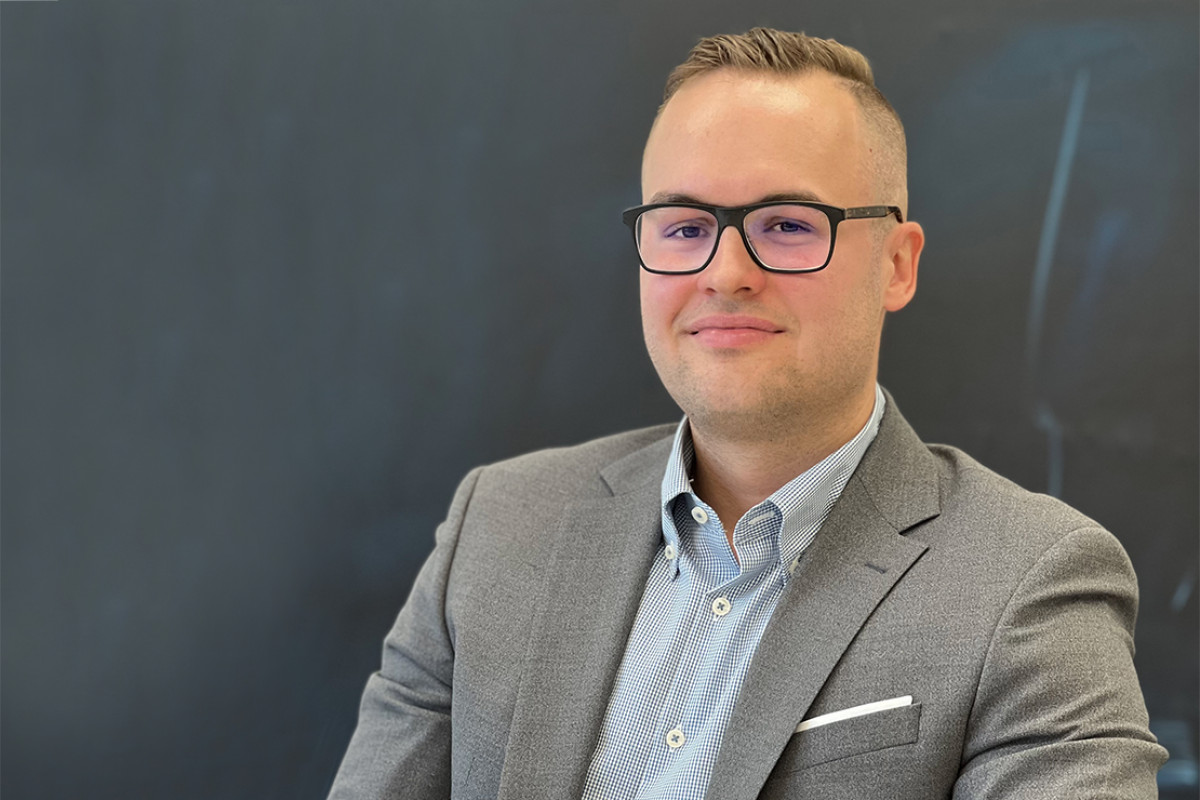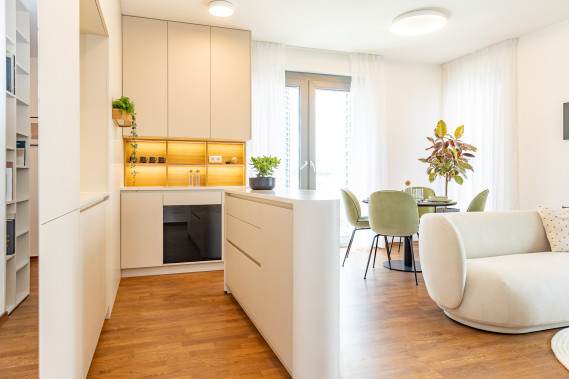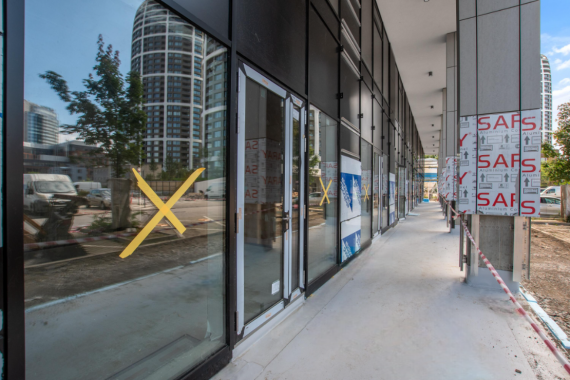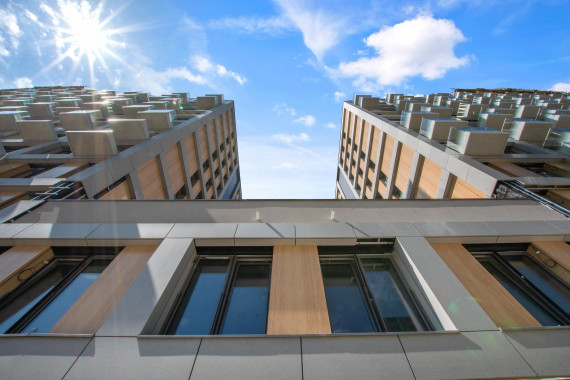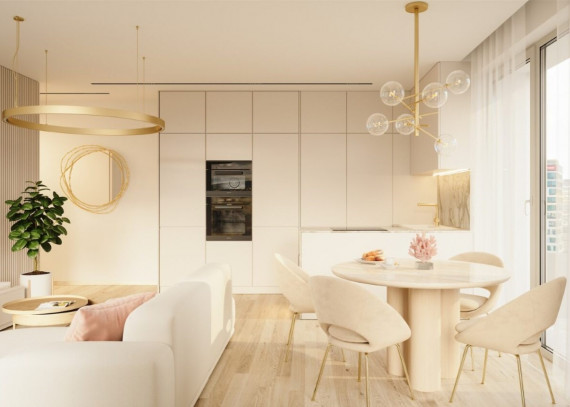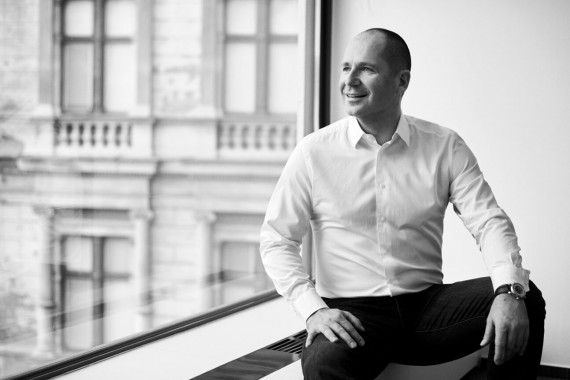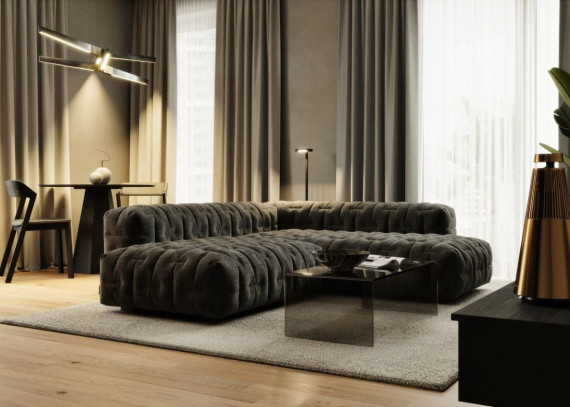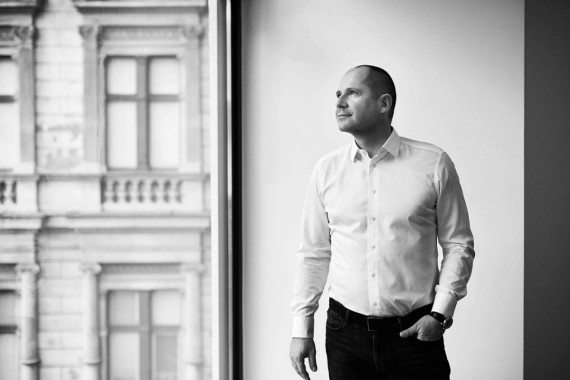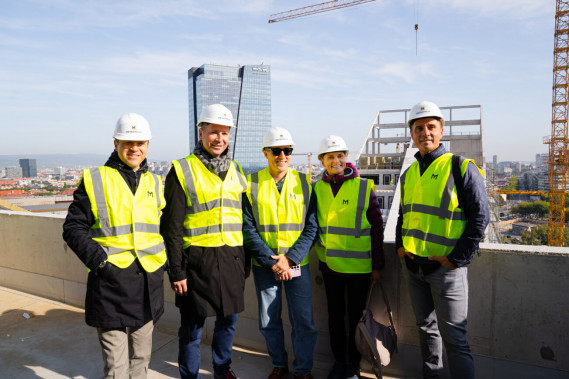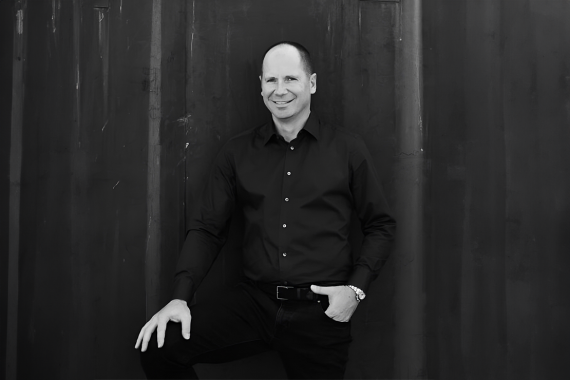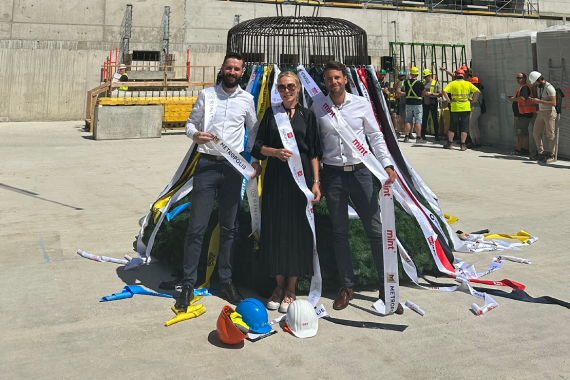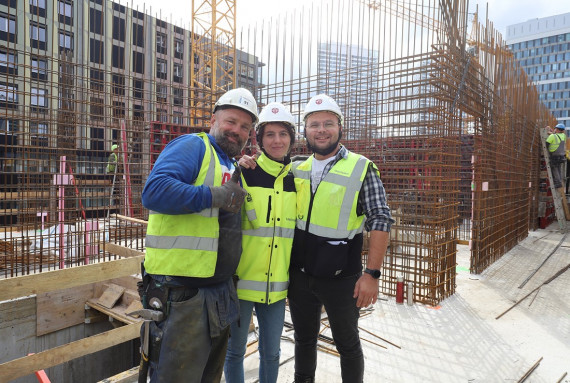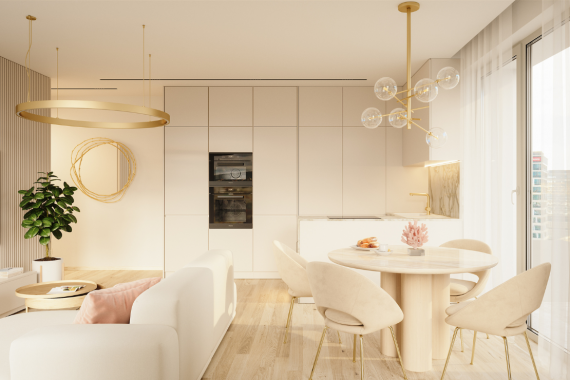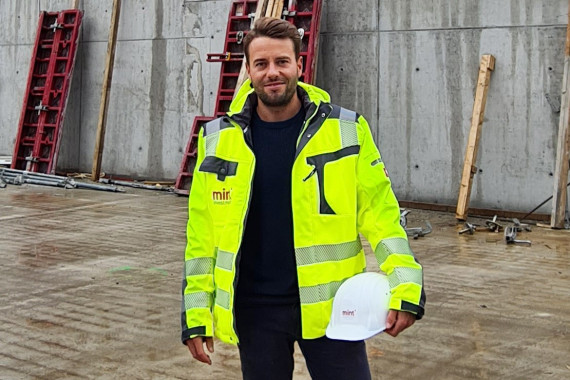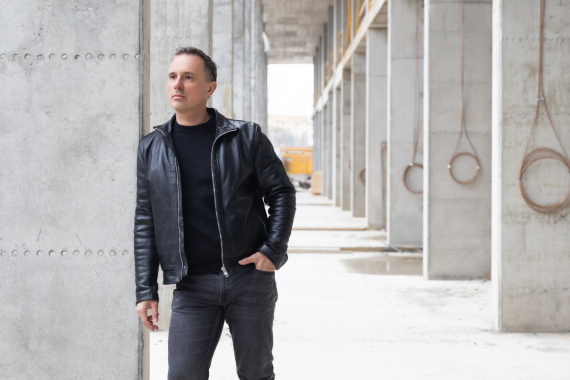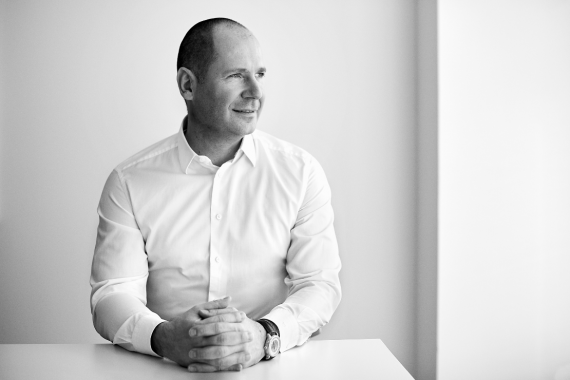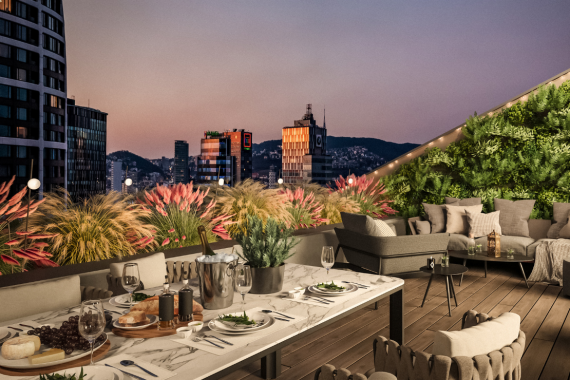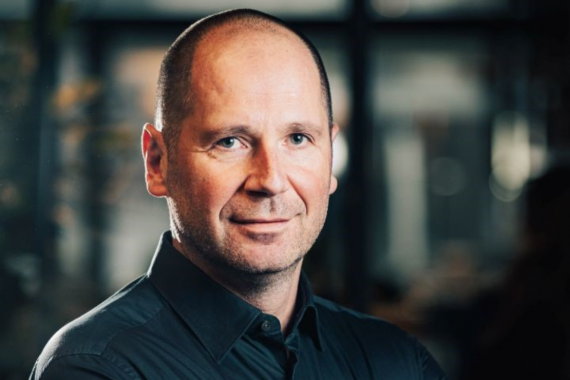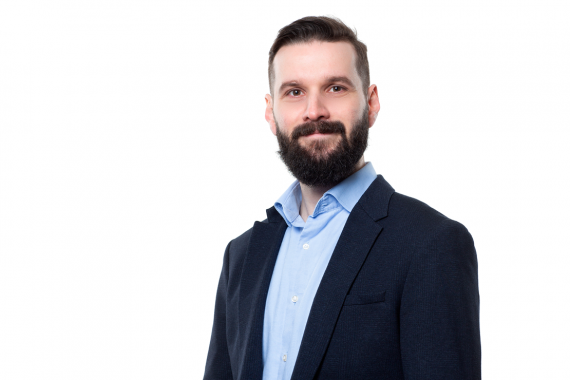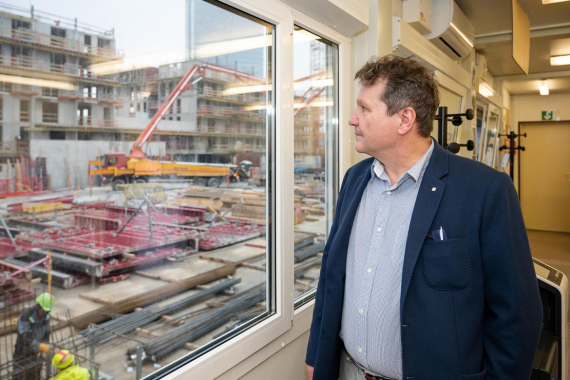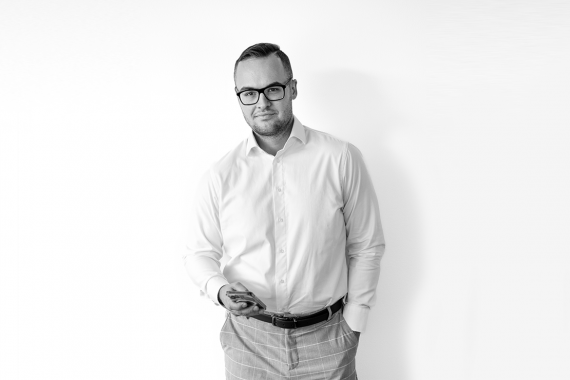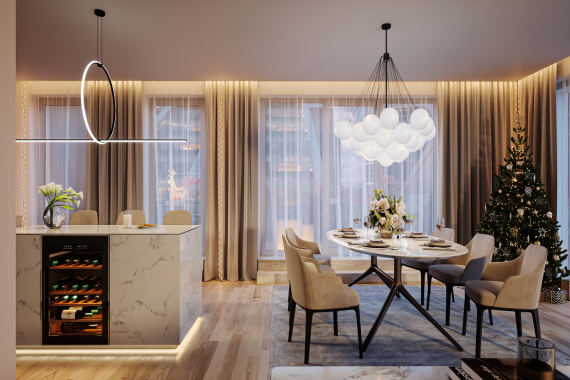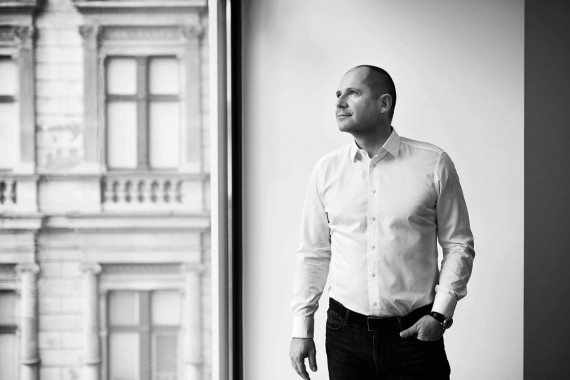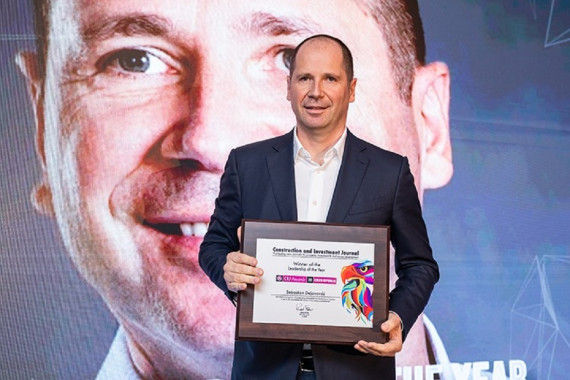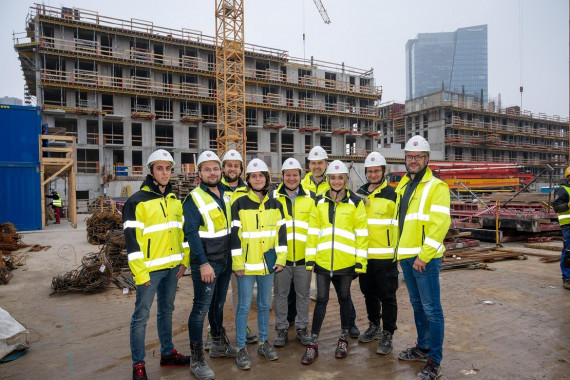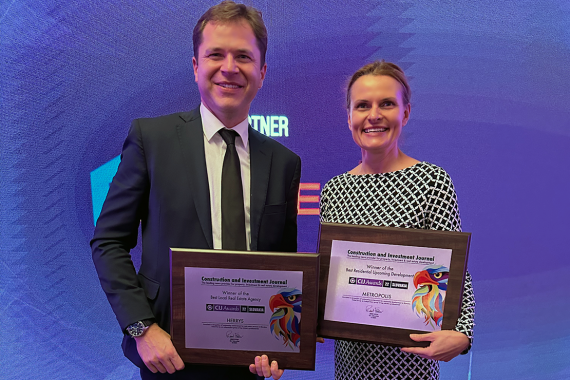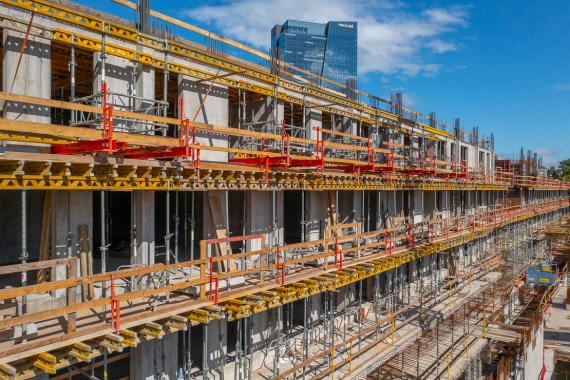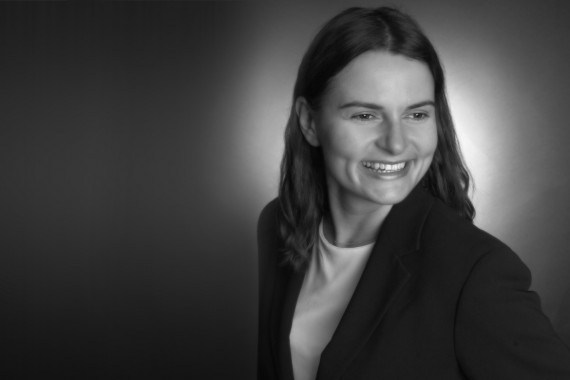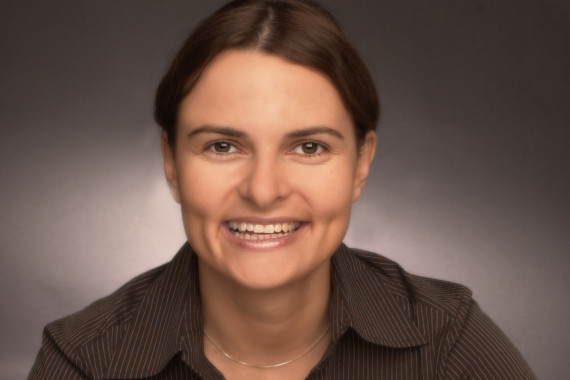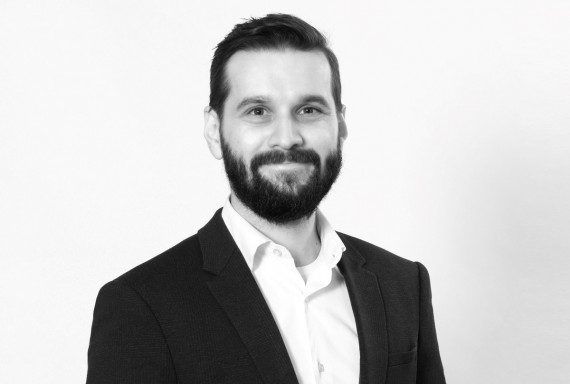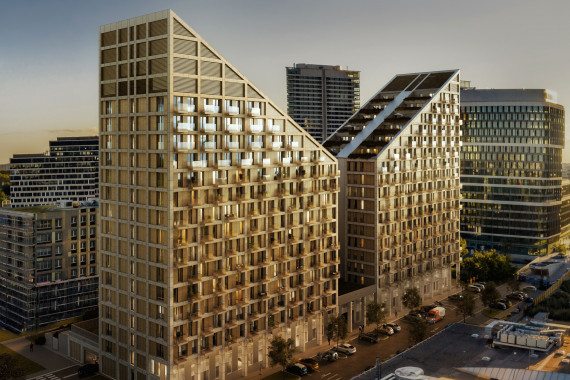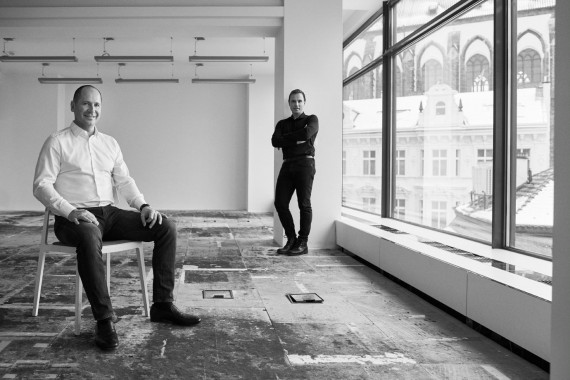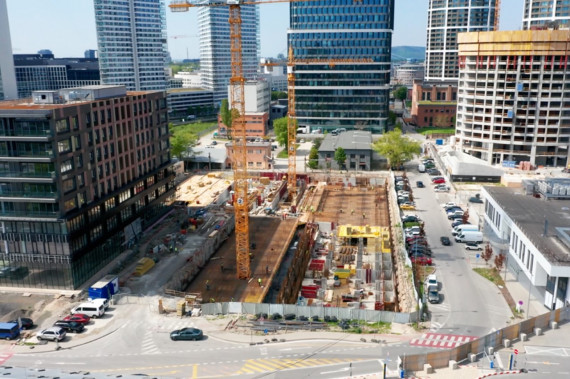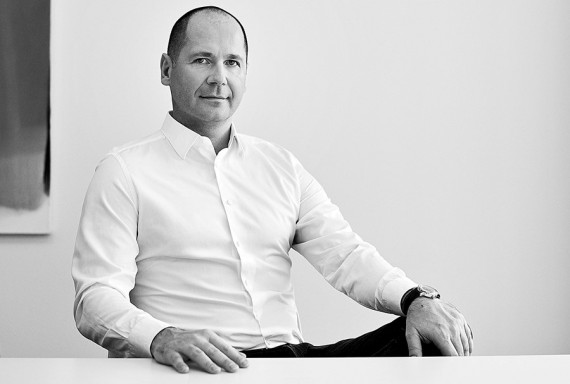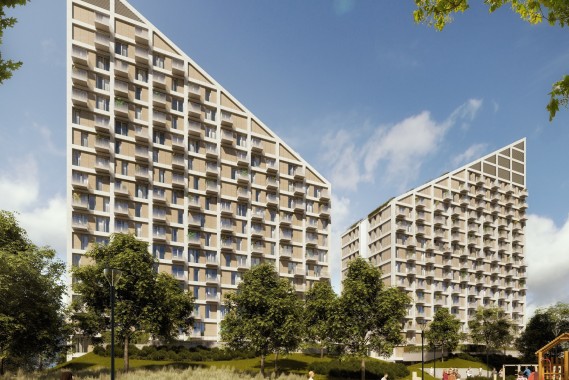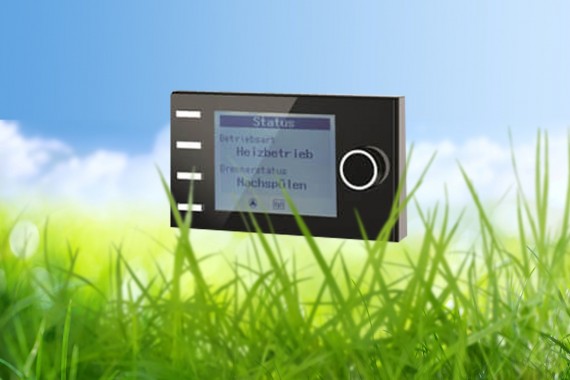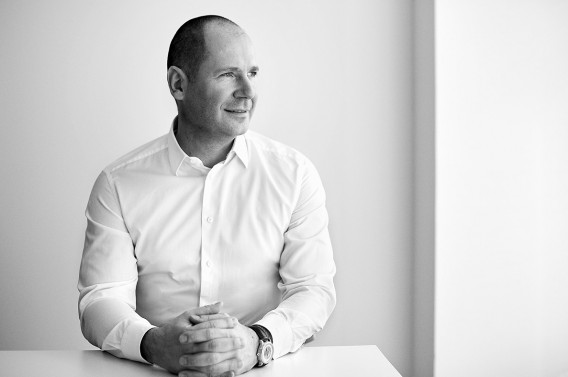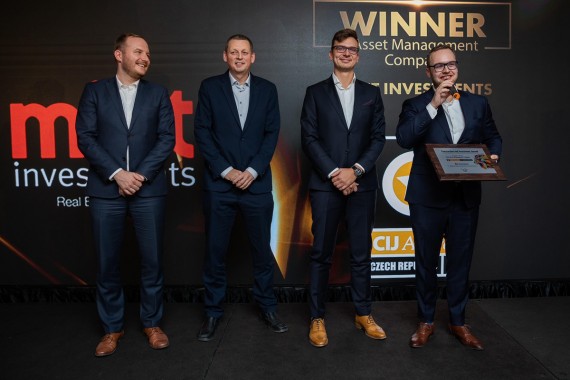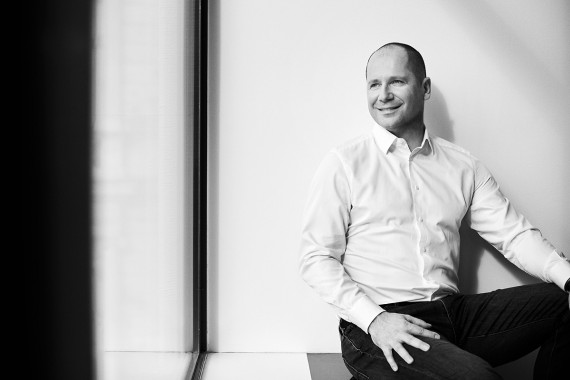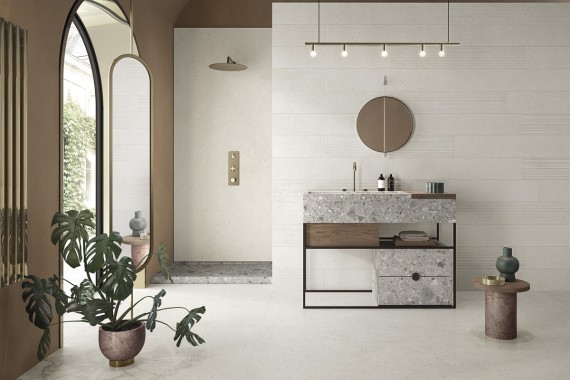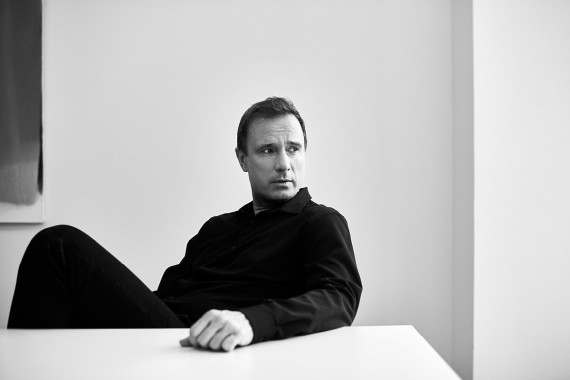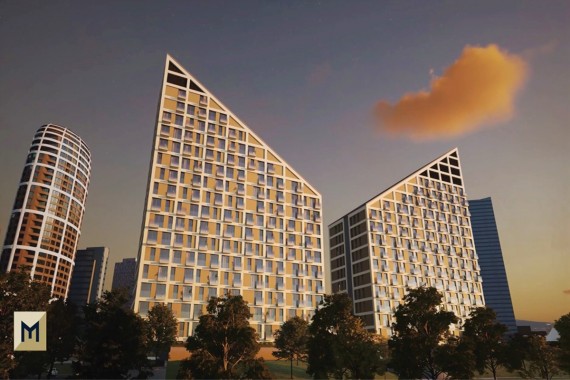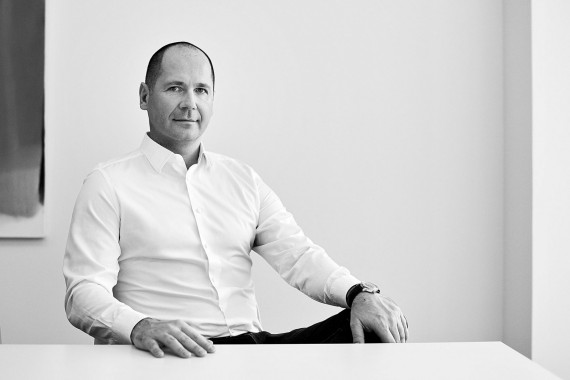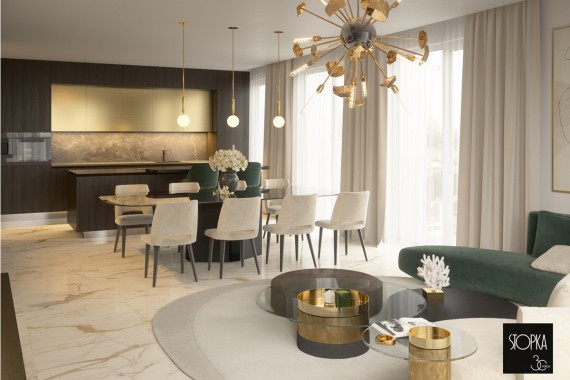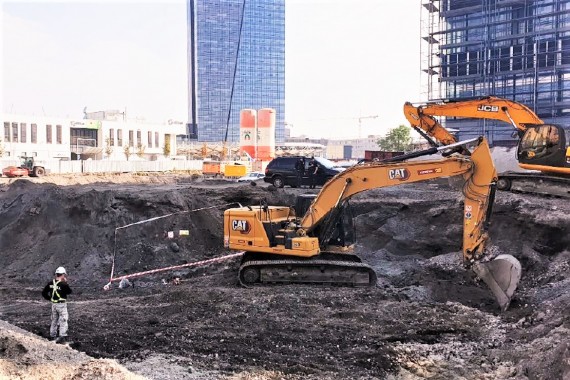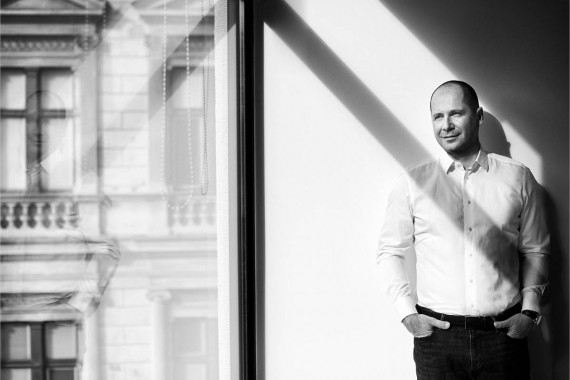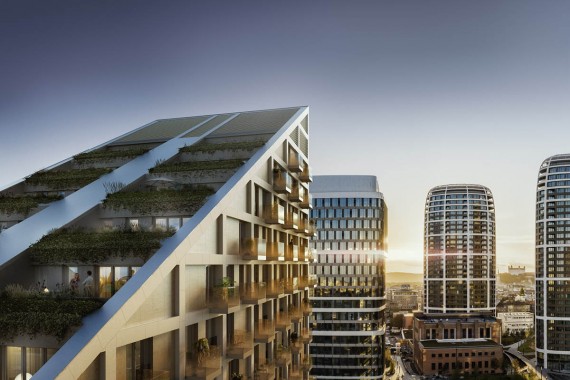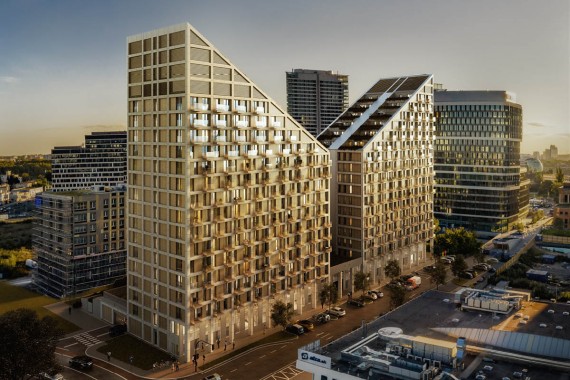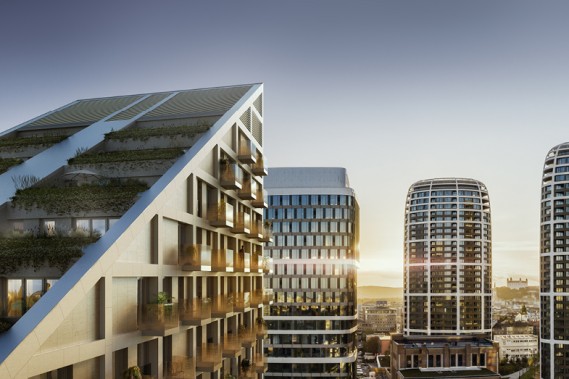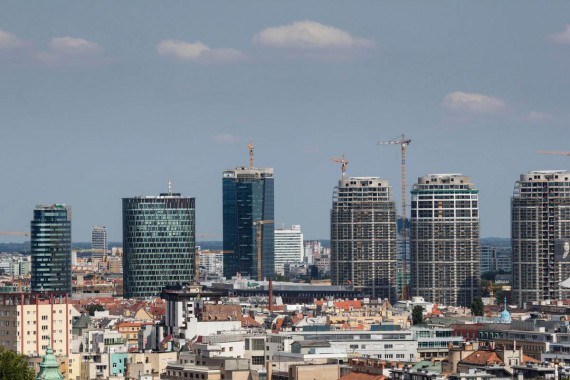“I think that the premium market is not at any risk because of current situation. One of the reasons for this is that there are few such apartments, and their package is limited,” says Jaroslav Mida, investment director at Mint Investments.
How is the Metropolis project progressing?
The project is progressing according to plan. Today we are between the eighth and ninth floors above ground, with one floor being concreted about every three weeks. We assume that in July of next year we could be down with the concrete structure up to the top, i.e. the sixteenth and eighteenth, floors of the buildings. After that, details will be worked out, with the completion being scheduled for the first quarter of 2024. Use-approval is scheduled for the second quarter of 2024.
Many developers like to describe their projects in a typical marketing language, but let’s try it a little differently. What do you think distinguishes Metropolis most from other Slovak premium projects?
I think it is not just “marketing blurb” when I say that we have the best technology around. Nobody in the locality has ceiling heating and cooling. We have top quality recuperation, which is once again unmatched by anyone in the area, something that has also been confirmed by our supplier. This fact was also reflected in the number of interested parties, who were attracted to the project by the high technological standard. As for the interior elements, we use Italian brands. There are some 16 shades of large-format gres wall and floor tiles available for our clients to choose from. In the interior, we went for doors with an above-standard height with rebateless fitting, while the clients can choose from six hues of solid wood flooring. The project will include delivery boxes for deliveries of food or other items, which will work in cooperation with the reception. Nevertheless, what most distinguishes us from our competition is the design of the building. Both buildings make together an M-shape, which is slightly atypical among the surrounding structures, but will certainly fit nicely into the site and at the same time stand out from all the others. So I am convinced that it will occupy a very good position in the downtown.
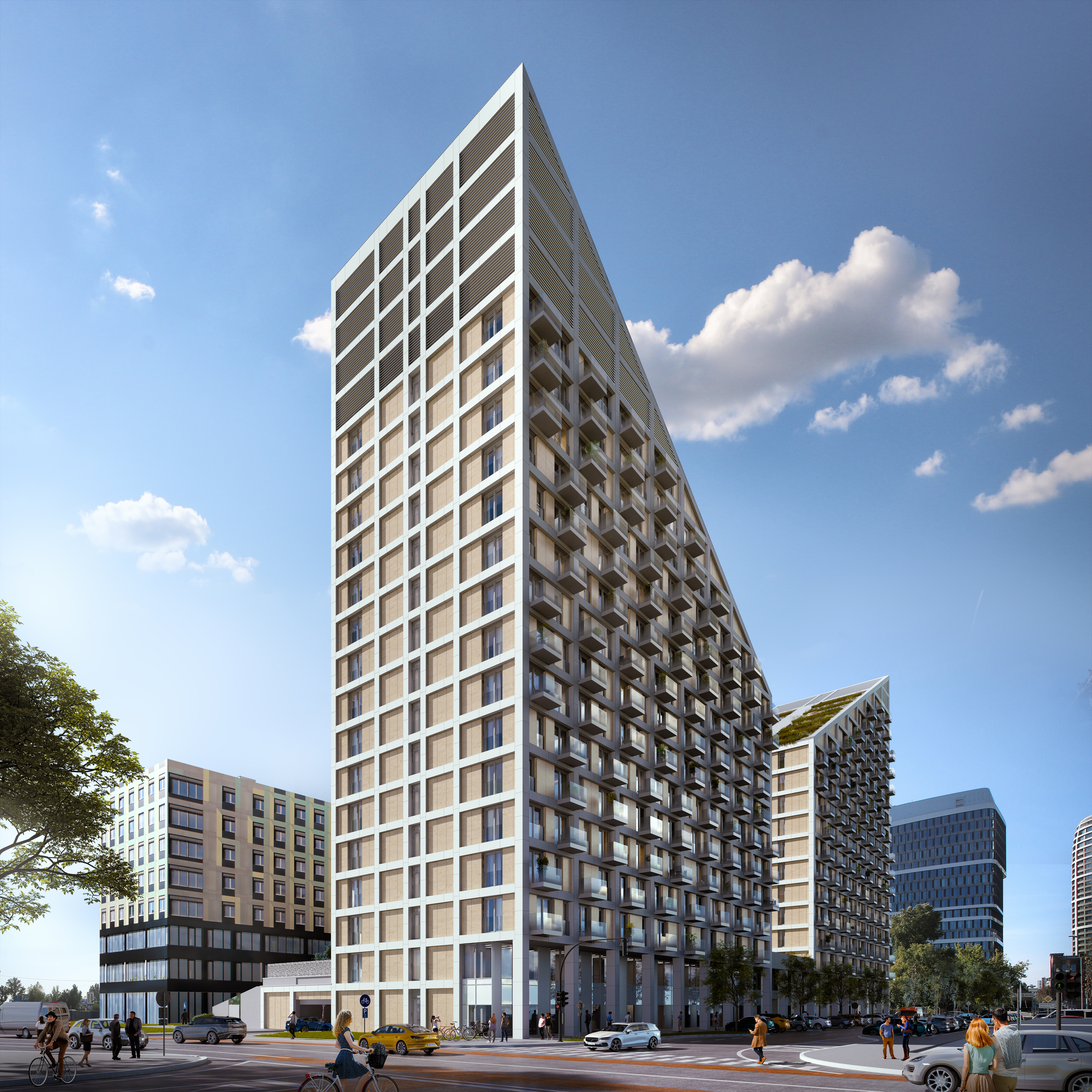
On a page of one of your blogs, you write that Metropolis will bring innovative technological solutions that will save future residents considerable amounts of money in energy savings. Energy is currently a much-discussed topic, so how much would the residents save on it under this project?
It is not possible to quantify it exactly at this stage of the project. We are aiming for the project to have the highest energy sustainability certificate A0, in which case energy savings could be around 20% to 25%, but we will have more precise figures only once the installation and testing have been done around May 2023. As part of the construction, we have created a model apartment for technology and material standards, something which is quite unusual in Slovakia. Here, we will install and test various elements, technologies, materials in advance, and only after fine-tuning all the details will the realisation of individual apartments actually begin. This project is technologically superior and we want to be sure that everything will work 100%.
The project was presented in 2017, but its preparation was under way much earlier. When exactly did the idea come about?
Work on the project has been ongoing gradually since 2008, and so preparation took place over a number of years, during which we perfected the project to its current state, the type of apartments and units we see today. The last modifications and raising of the standard took place only around 2017, when we realised that the clientele in Bratislava is slightly different from that in Prague and that a project set in the downtown requires better technological facilities to make the project appealing. So, improvements were being made up until the start of the permit processes in 2018; we received the land planning decision and building permit in 2018 and 2019.
What buildings were present on the site at the time?
Practically, there was nothing there then. The first thing going up then was Panorama City from the workshop of our competitor, but otherwise there were just old buildings. Specifically, there was a small ruin on our property, the surrounding area was generally quite neglected, so we had to demolish everything that was there and start from scratch.
Could you describe the development process of the project intentions and visions?
In its essence, the design has not changed. The letter M had already been designed in the first studies by the Czech studio City Work Architects. The composition of apartments, the composition of retail, and the streamlining of civic amenities were changed according to what would work in the locality. The standard of both external and internal elements, including apartments and reception, was added, but the design as such remained preserved according to the first proposal.
Both towers should be 63 metres high, but one will have 16 and the other 18 above-ground floors. Why will they be different?
One peak of the building will house the technological equipment. This is the last triangle at the top where a utility room will be located. However, it was also necessary due to regulatory requirements, and as a result we weren’t allowed to design apartments there.
The first two floors will accommodate business outlets and services with floor areas of 12 to 223 square metres. Is this still on?
Certainly yes. In the past, the design was of slightly larger floor areas, but we found out that outlets in apartment buildings are more difficult to rent out if they are larger. That’s why we decided to make them smaller and more efficient. Progressively, we would like to launch marketing for retail units next year. We have a relatively large database of interested parties. We are pleased that several of them are future apartment owners, that is, those who bought an apartment in the project also see this location as being attractive for business.
What businesses do you envision there and do you already have tenants?
No restaurants mainly due to fire requirements and the comfort of the future owners, but we have interested parties from various sectors, such as private clinics, notary or law offices, premium showrooms, but also those interested in smaller outlets, such as newsagents or small cafés. We are open to everything, but we are aiming for a parterre concept that makes sense both for future apartment owners and for the outlets that are to be run in the project, that is, to be economic. So, we don’t want five notaries there. We would like to achieve that the parterre be used by the entire downtown, so we will try to combine the mix of establishments appropriately. Nevertheless, this will depend on the interest of operators, or franchisees seeking to participate in the project. We believe that we will combine them in such a way that not only the residents of the building are satisfied, but also the people from the surrounding area.
There are 298 apartments in the project. Back in May of this year, you told the HN newspaper that the project is 59% sold, meaning that 177 apartments have already found their owners. How is the project doing now?
Today we are at 62%. Naturally, sales are not going as fast as at the beginning, but we expected that. Since we want to maximise the yields on the project, we are phasing the sale. We expect that a certain number of apartments will remain unsold at the end, but, as a company, we are also engaged in apartments rental and management in the Czech Republic, so it is not a problem for us to sell apartments gradually. Perhaps, when compared to other developers, we are not under so much pressure to sell everything quickly.
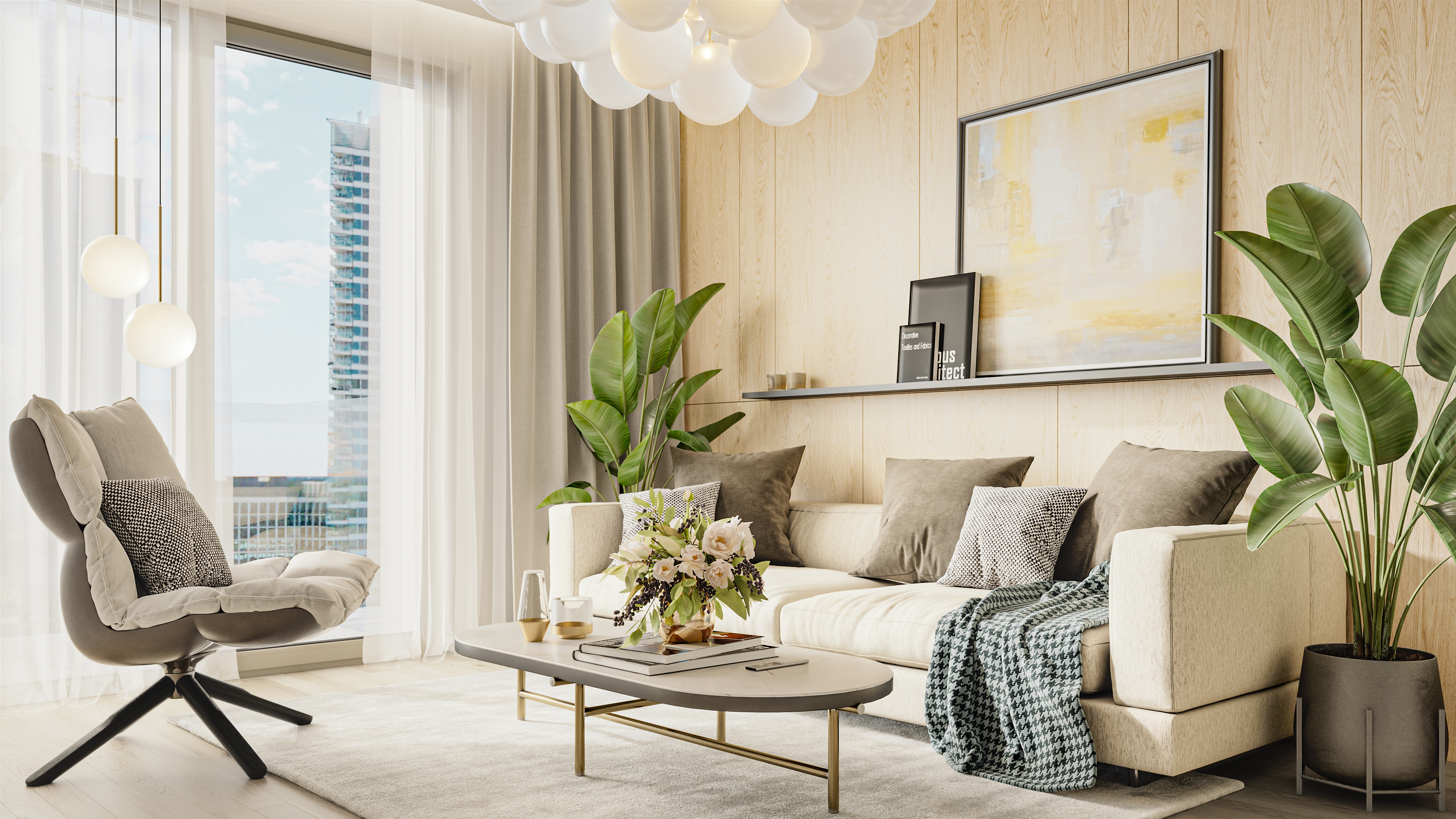
Are your numbers of apartments divided into exact phases that would go on sale in a given period?
We have phased which apartments will be allowed to go for sale and approximately when. Each project has apartments that are on a higher floor, with a better view which are considered more attractive by interested parties. So, strategically we have chosen some of the apartments to be put up for sale first, and kept some of them for sale in Metropolis for later. They are the best in terms of views or orientation, and we put them on sale when a client comes with specific requirements. And if such an apartment is on offer, but still quasi hidden, we can offer it. But we normally have a package of apartments, which, when sold out up to a certain percentage, is supplemented by more units.
When did you start working on pricing and how has it changed over the years?
We opened the sale in the autumn of 2020. However, we have not published the apartment prices for Metropolis, so neither are we publishing specific data. Every week, dozens of interested parties came to meetings with our seller, Herrys, so the prices grew alongside the interest. This was the basic pillar, as it is not economically advantageous for us to sell apartments “below the market”. We were in a good position from the very beginning; we had a top product, a high standard, and already in the first round, when we approached the internal database of our seller’s clients, the interest was extreme, so the prices were also adjusted, sometimes on an hourly basis; this time last year in the autumn, the prices were increased eight times. We set that price and sales strategy together and managed it very well, today we are adjusting the level as needed. Our prices are set at the level at which we want to sell, and nothing is forcing us to lower them.
Could you outline the apartment prices in the project?
This information or data about sales and prices we keep hidden. It’s a strategy that has worked well for us so far. So we don’t have any publicly available information or price estimates. Our aim is that if a client is interested in buying an apartment in the Metropolis project and in the standard it offers, the client will come to us and receive an offer consisting of certain apartments according to their expressed interest. They vary in price, but we don’t want to comment on what the prices look like in general.
Could you at least compare them illustratively to the price range of other projects?
The most luxurious apartments in our business are comparable to the prices in the Eurovea 2 project, at least according to the information circulating in the media. So, on average, we are moving at a level similar to our competition in the area, such as Sky Park from Penta or Vydrica from Lucron. Since we are technologically at a higher standard, the prices may be a
bit higher, but our top apartments in the project can be approximately at the level of prices in Eurovea 2, which is currently perhaps the most expensive project on the Danube.
The project is located in the downtown, where a number of premium projects are currently being built, such as the mentioned Eurovea 2 or Ister Tower. How did the competition affect the project’s marketing and pricing?
Everyone keeps an eye on the competition. We follow their trends and pricing, but as I have said before, most of the larger projects have their prices hidden, so the data is limited. We monitor their marketing and public presentations of projects, but we walk our own path. We believe that our product is the best in the location, so our line of communication is individual to us. But if our competition suddenly picks up the marketing power for the period, we don’t want to be left behind either. People have a partially short-term memory, which means that once you disappear from their memory, it’s harder to get back there afterwards. So the goal is to stay in people’s minds, to communicate both the progress and successes of the project and to adapt marketing to the market situation.
It is said that Bratislava is slowly running out of places where to build. For premium projects, the downtown is home, but it is slowly filling up. Which other locations do you think have the potential to become the new downtown?
I don’t think that any other location in Bratislava can be the current downtown; it has everything from luxury projects to shopping centres, the Old Town, or the Danube promenade. It’s a top location, so I don’t think that anything will beat it. On the other hand, it is true that there is nowhere to build downtown, but we also receive offers for projects from other locations in Bratislava, for example in Ružinov or other more peripheral parts of Bratislava. I think that there are still areas for construction there. Of course, it won’t be a premium project in downtown, but it will be the sort of project that is in short supply, for example in Prague, meaning apartments for people who need them, rather than investment or for people who have a lot of money spare. It will be a mid-range project, something which is also undervalued in Bratislava, as there is a shortage of apartments there. So, I think that other locations have the potential to add this type of product, which is sorely lacking today. And if something is not done about it, as both Prague and Bratislava have very slow building permission processes, then people will not have anything to buy at reasonable prices.
What other projects are you planning in Slovakia, and do you want to move into foreign markets as well?
No, not yet. For now, we are focusing on the Czech Republic and Bratislava. The reason for this is that Mint Investments is a medium-sized firm that has based its success on efficiency and close communication with partners. So, for now, we do not feel the need to move into another market, where this strength of ours might start to get stuck and could affect our performance. But we’ll see how things develop later on.
Bratislava projects also have a very specific clientele and demand, as it is the most expensive real estate there. Given the sell-out rate of the project, it looks like the group of people who can afford the premium segment is certainly there. They do not constitute a dominant group, but nevertheless still quite a large part of society. So do you think that there is a growing share of Slovaks who can afford premium housing?
Yes, I do. Bratislava has attracted many companies over the past years, and overall it has also become richer in the private sector, and we can see from our Metropolis project that interest is high. Mostly these are people directly from Bratislava. This is comparable to demand in Prague, where there is a kind of bubble in both cities, where there are a lot of companies and investments and it is a completely different market compared to, for example, the regional cities. There are enough rich people there to afford a premium product.
Who buys million-dollar apartments in Slovakia? Foreigners are in the minority when it comes to luxury
Who were the typical model buyers, for example politicians or managers?
In the beginning, the proportion of clients who bought an apartment for their own living was around 50%. We didn’t survey their occupations, though I didn’t notice any famous politicians there. Neither do we keep track of what circles clients move in, except to check if they have criminal records and so on. But the paradox is that even if it is a luxury project, most people buy it for their own living. In the beginning, as I said, this figure was around 50%, and remained at that level for a long time. But today, when we have reached a certain price level that perhaps makes a little less sense for investors than it did at the beginning, that figure has switched to 100% of sales being for owner-occupiers. At least, that is according to what buyers are telling us. We’ve also had diplomats or foreign executives among our clients who have relatives in Slovakia. But I don’t want to comment on the client mix, because every client is important and it doesn’t matter what they do, as long as they are interested in our product. If the person has saved up and takes out a mortgage, so then they will buy the apartment. It is a good investment, but also a housing opportunity.
Several large developers have confirmed to the newspaper HN that more than 50% of their clients are buying an apartment without a mortgage. How is it with Metropolis?
I can confirm that this number is similar here as well. Roughly half our clients have either no mortgage or a minimal mortgage.
What developments do you expect for the future? Do you think that the premium segment of the market could be at risk over the next few years, or will it, on the contrary, become more successful?
I think that the premium market is not at any risk from the current situation. One of the reasons for this is that there are so few apartments, and their package is limited. Another reason is that there is still the clientele who want to invest in the higher segment, as they see it as a protection against inflation, but also as an opportunity to grow their investment. It is true that we are in uncertain times and, just as we said a year ago, that covid was finally over, so then the war came and everything changed. Besides the uncertainty, it has also had an impact on clients, and being in close proximity to Ukraine has made clients think about the future all the more. But the moment the social chaos settled down and when people accepted that the war is here to stay, but we can’t dwell on that, so then they returned to the real estate market. We have had a decade of economic and real estate boom here, so there will definitely be some period of settling down, but it will certainly not pose a threat to the premium segment.
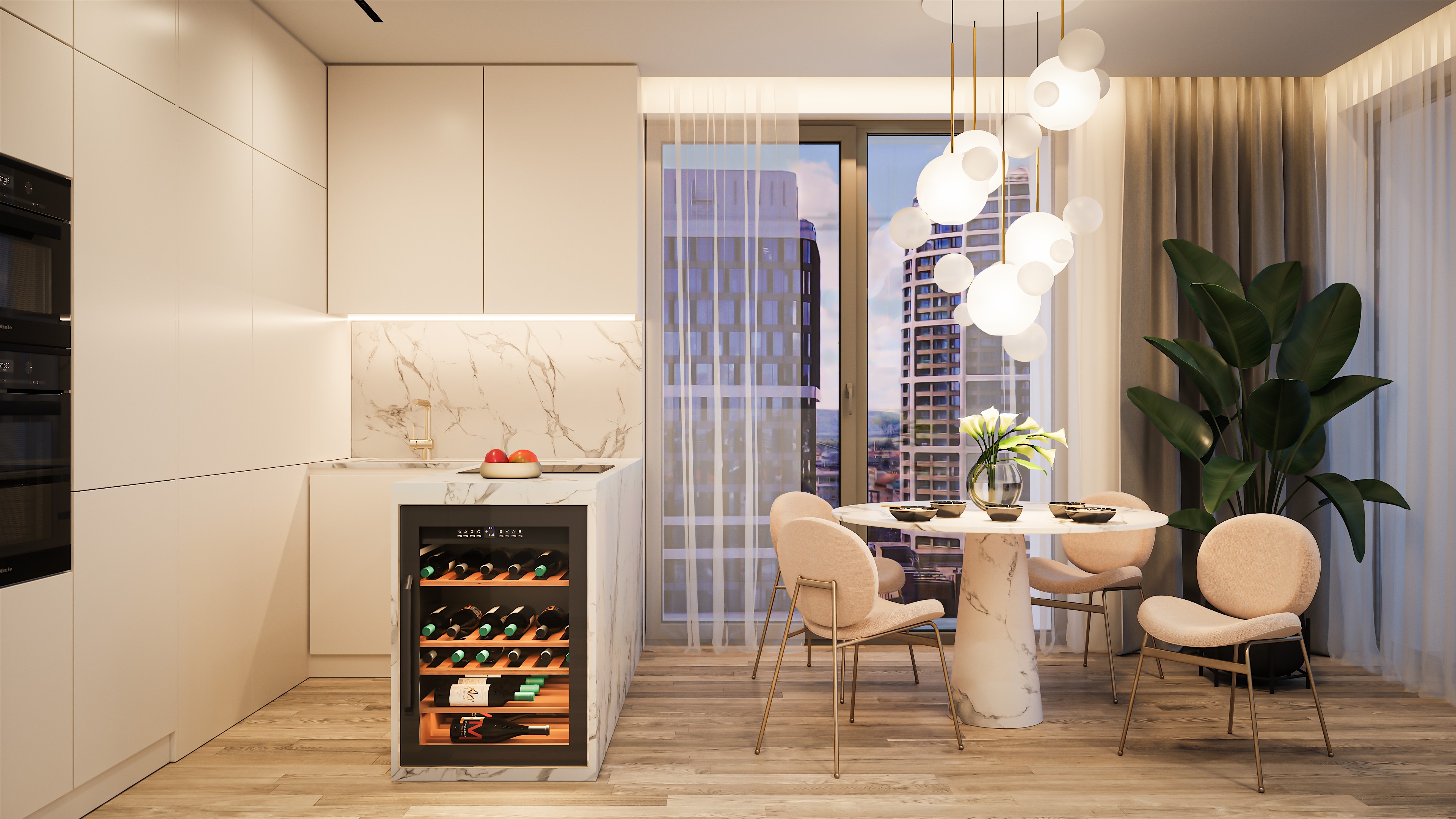
The real estate market has also been impacted by the rising cost of energy and building materials. What effect has that had on your costs, and how much of they gone up as a percentage?
It has been a hectic period. The price rises in real terms started in mid-2021, when they were reflected mainly in the cost of materials. After the start of the war, there was also uncertainty in the energy sector, which of course was again reflected in materials, but we at Mint investments were already actively working with the general contractor Takenaka and we approached various subcontractors and discussed prices. So I think we were able to minimise the impact as much as possible, so at the end of the day it was in lower units than maybe was the case with other developers.
As regards the increase in energy prices, this hasn’t impacted us yet, mainly because of the price capping. At the same time, the project is only now gaining momentum in terms of construction, so we haven’t actually used that much energy yet. So we have perceived the increase mainly since our subcontractors have more expensive energy for the production of materials and the general contractor for the circulation of machines. But, at the end of the day, we have managed to minimise this as well, so overall we are happy with the result.
First you had to deal with the pandemic – you started presales during the second wave, and now the economy is slowing down due to the war in Ukraine and high inflation. In what regards are these situations similar, but also how did they differ?
We launched sales in autumn 2020, and the initial panic went away with the end of the first wave, so people had time to process the whole situation by then. Every effect needs time to settle in people’s minds and for them to be able to perceive it somehow, so we timed the sale quite well. The effect of the pandemic on sales was, therefore, zero for us. Paradoxically, on the contrary, they were all the more interested in the Metropolis project because they wanted to invest money. In the first phase of covid, when we were all locked at home, many people were thinking about what to do with their money. Before that, the level of consumption in society was very high, and people were buying in bulk and spending money, essentially on junk. However, when they had to sit at home during the pandemic, they were much more concerned about where to invest. We saw this also in the Czech Republic, where people have started to invest mainly in funds, but also in apartments. So by the time we started selling they had already been encouraged by the fact that they could invest in an apartment, and so there was more interest.
Nonetheless, that was a completely different situation from the current one, caused by the war in Ukraine. At that time, we were already in a certain sales cycle, and after the war started, our clients’ behaviour also changed drastically. A client who would normally have made a decision in two weeks now takes a month and a half to decide. They think more about the situation in the world and the impact of the war.
Analysts forecast that interest rates could stabilise at 3% or 4% by the end of the year. What do you think about this estimate, and what impact could it have on property deals?
I think that the lower and middle segment could be most affected by interest rates, because they are mostly bought with a combination of own funds and a higher mortgage. The jump that we saw this year, from 1% to 4% has been a big one, so the higher the rate gets, the more the middle segment will suffer. That said, the luxury segment on the other hand has a clientele that does not rely so much on mortgages, and so the clientele will stay there. At the same time, however, the part of that clientele that wants to buy a home on their own with the expectation of a higher level of loan financing may shrink, as that financing is becoming more expensive.
As for the level of interest rates, this will also depend on the ECB’s decisions. Currently, its rate is 2.50 to 2.75 [JM2] percent, and mortgage interests in Slovakia are in the range of 3.5% to 4%, so I think that banks have already reflected their margins in them. So, I believe that next year interest rates will level out at a maximum of 4%, but this will certainly have an impact on slowing down the demand for real estate.
What developments do you expect in the market. How will property prices grow?
I think prices will probably stagnate. I don’t think they will grow at a breakneck pace, the more so with banks aggressively raising interest rates. There is no reason for prices to fall,
because although the prices of materials are now stagnating, they are still at a level that is much higher than a year and a half ago. We ourselves know that if we were to start building a project from scratch today, we cannot adjust prices downwards, because we would not just be unable to build the project, but we would also lose a fortune on it. So I believe we will see some stagnation.
And in your opinion, will that stagnation affect the entire market, including secondary and premium?
In my opinion, the middle segment for new apartments is on a trajectory of stagnation. Developers can’t lower prices because they would lose too much money after all costs are factored in. As for the luxury segment, this will always be specific. It depends on the specific product. Downtown can continue to grow, but it won’t be at the same pace as it has been in the past years, when real estate growth was huge in both Bratislava and Prague. The third segment is second-hand, where the Czech Republic, after the increase in interest rates, has already seen the effect of prices falling by 10% to 15%. In recent years, second-hand property prices have been catching up with the prices of new buildings. I can’t say whether this has happened in Slovakia as well, but in the Czech Republic the prices have equalised. And now we are nearing a turning point, with second-hand property that is older and of lower quality than a new-build, both in terms of energy and technology, is seeing a correction in the prices of second-hand apartments. And I think the same situation will happen in Slovakia, as financing will be more expensive, people will be more selective, and will buy more in the middle segment if they can afford it. So, if you have a second-hand and new-build for the same price, so you certainly wouldn’t choose the second-hand.
Who is Jaroslav Mida
He is a graduate of the Institute of Economic Studies at Charles University in Prague. In 2014, he joined Mint Investments as an investment analyst, where he gradually gained the position of investment director. He leads the investment team, is responsible for the transaction process, project financing, development and searching for investment opportunities.
Author: Petra Uhráková

